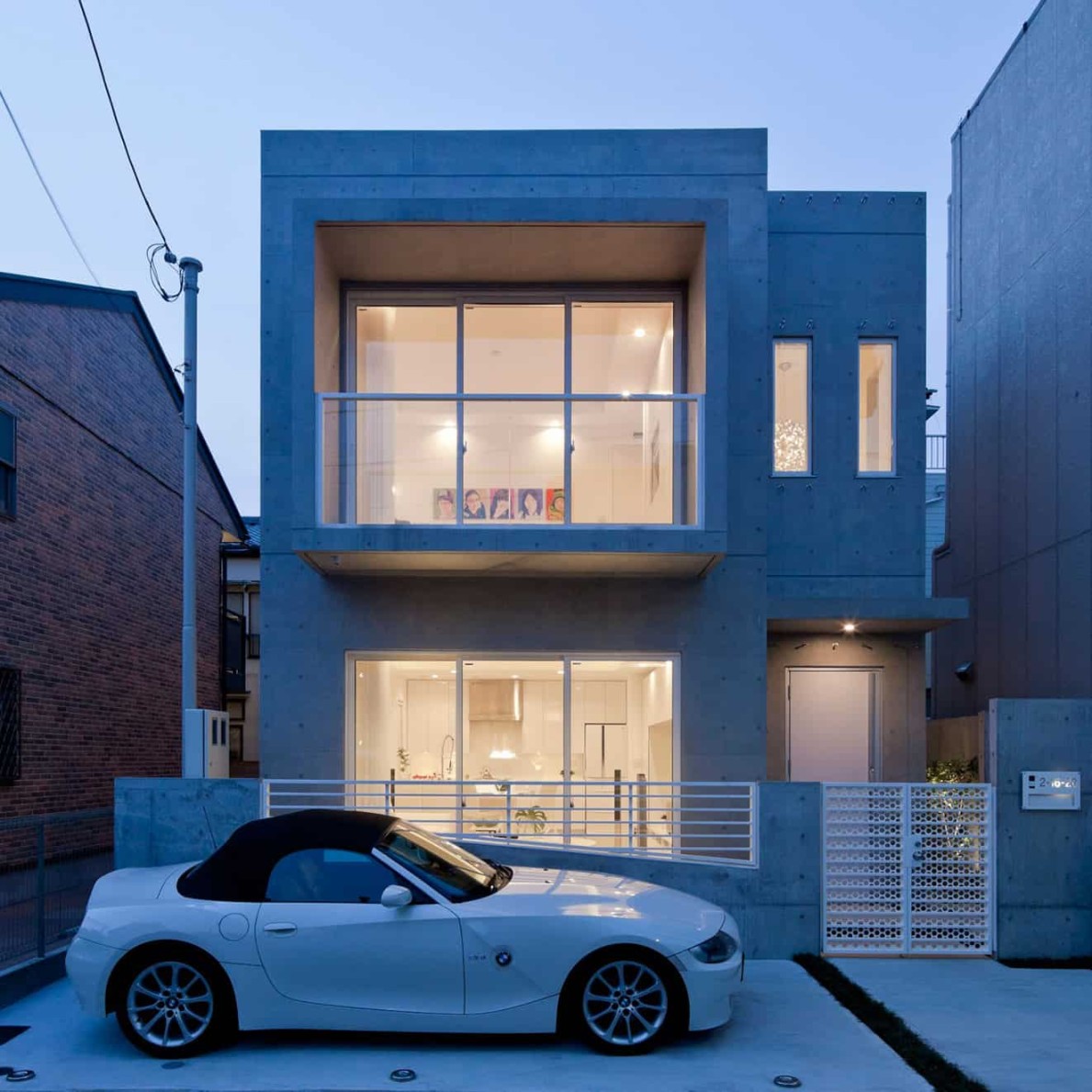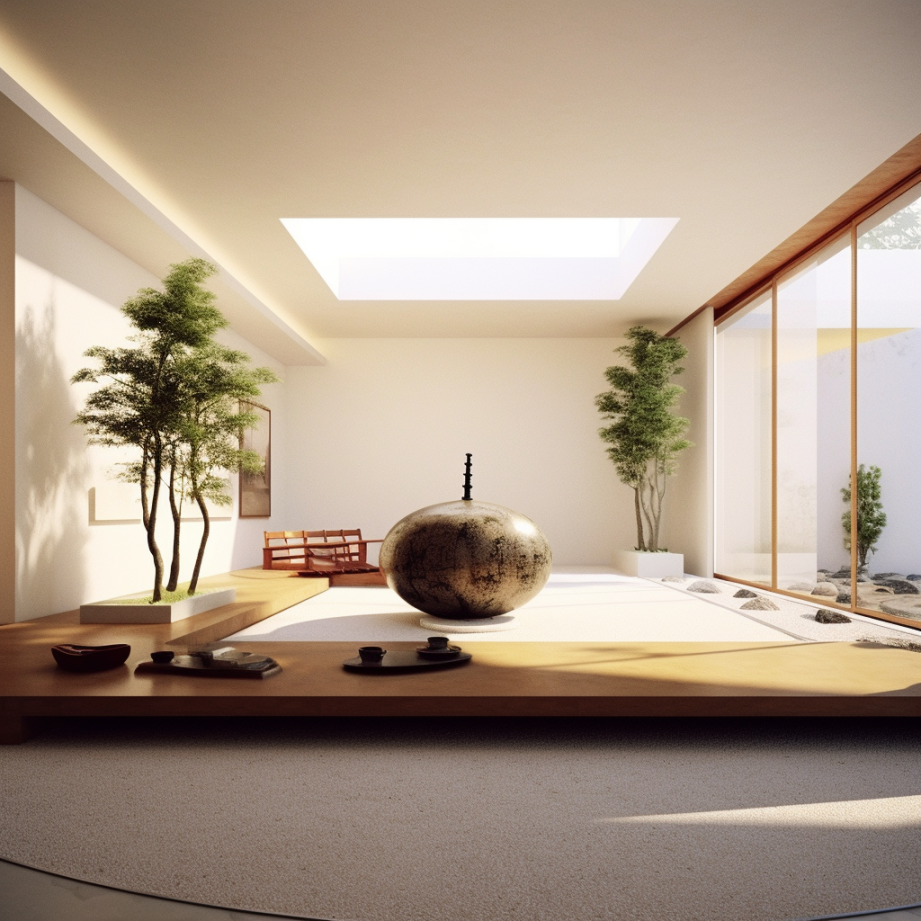
https://ngecek.id/?p=587Serenity Unveiled: Embracing Zen Minimalism In Your Dream Home ] –
In today’s fast-paced world, many people find themselves yearning for a sense of peace and tranquility in their homes. This is where the concept of a minimalist Zen house comes in. Combining the principles of minimalism with the ancient practices of Zen Buddhism, a minimalist Zen house aims to create a harmonious and serene living space that promotes mindfulness and simplicity.
Minimalism, as a design concept, centers around the idea of living with less. It encourages individuals to declutter their homes and only keep items that are essential and bring them joy. It is all about creating a space that is clean, uncluttered, and free from distractions. Zen, on the other hand, is a philosophy that seeks to find enlightenment through meditation and mindfulness. It emphasizes the importance of being present in the moment and finding peace within oneself.

A minimalist Zen house incorporates elements from both minimalism and Zen Buddhism to create an environment that fosters a sense of calm and introspection. Here are some key characteristics of a minimalist Zen house:
1. Simplicity: A minimalist Zen house features clean lines, neutral colors, and uncluttered spaces. Furniture and decor are kept to a minimum, allowing for open and airy rooms. The focus is on creating a space that is visually pleasing and promotes relaxation.
2. Natural materials: Natural materials such as wood, stone, and bamboo are commonly used in a minimalist Zen house. These materials not only add warmth and texture to the space but also connect the occupants to nature, fostering a sense of serenity.
3. Functional design: Every element in a minimalist Zen house serves a purpose. Furniture is carefully chosen for its functionality, and unnecessary items are eliminated. The layout of the house is designed to flow seamlessly, allowing for easy movement and a sense of balance.
4. Abundance of natural light: Natural light is a crucial element in a minimalist Zen house. Large windows, skylights, and glass doors are used to maximize the amount of natural light that enters the space. This not only creates a bright and inviting atmosphere but also connects the occupants to the outside world.
5. Mindful decor: When it comes to decor, a minimalist Zen house embraces simplicity. Each piece is carefully chosen and placed with intention, creating a focal point or a sense of tranquility. Elements such as indoor plants, rocks, and water features are commonly used to bring nature indoors and create a peaceful ambiance.
6. Meditation space: A minimalist Zen house often includes a designated meditation space. This area is free from distractions and is designed to promote mindfulness and introspection. It may include a cushion or mat for seated meditation, soft lighting, and a serene backdrop.
Living in a minimalist Zen house has several benefits. It allows individuals to simplify their lives and focus on what truly matters. It promotes a sense of calm and relaxation, which can be beneficial for one’s mental health. Additionally, the minimalistic approach to design reduces the need for excessive consumption, promoting sustainability and reducing environmental impact.
Creating a minimalist Zen house may require some decluttering and reevaluating of one’s possessions. However, the end result is a living space that promotes peace, mindfulness, and a sense of well-being. So, if you are looking to create a sanctuary of tranquility within your own home, consider embracing the principles of minimalism and Zen Buddhism and embark on the journey of creating a minimalist Zen house.
In today’s fast-paced world, many people find themselves yearning for a sense of peace and tranquility in their homes. This is where the concept of a minimalist Zen house comes in. Combining the principles of minimalism with the ancient practices of Zen Buddhism, a minimalist Zen house aims to create a harmonious and serene living space that promotes mindfulness and simplicity.
Minimalism, as a design concept, centers around the idea of living with less. It encourages individuals to declutter their homes and only keep items that are essential and bring them joy. It is all about creating a space that is clean, uncluttered, and free from distractions. Zen, on the other hand, is a philosophy that seeks to find enlightenment through meditation and mindfulness. It emphasizes the importance of being present in the moment and finding peace within oneself.
A minimalist Zen house incorporates elements from both minimalism and Zen Buddhism to create an environment that fosters a sense of calm and introspection. Here are some key characteristics of a minimalist Zen house:
1. Simplicity: A minimalist Zen house features clean lines, neutral colors, and uncluttered spaces. Furniture and decor are kept to a minimum, allowing for open and airy rooms. The focus is on creating a space that is visually pleasing and promotes relaxation.
2. Natural materials: Natural materials such as wood, stone, and bamboo are commonly used in a minimalist Zen house. These materials not only add warmth and texture to the space but also connect the occupants to nature, fostering a sense of serenity.
3. Functional design: Every element in a minimalist Zen house serves a purpose. Furniture is carefully chosen for its functionality, and unnecessary items are eliminated. The layout of the house is designed to flow seamlessly, allowing for easy movement and a sense of balance.
4. Abundance of natural light: Natural light is a crucial element in a minimalist Zen house. Large windows, skylights, and glass doors are used to maximize the amount of natural light that enters the space. This not only creates a bright and inviting atmosphere but also connects the occupants to the outside world.
5. Mindful decor: When it comes to decor, a minimalist Zen house embraces simplicity. Each piece is carefully chosen and placed with intention, creating a focal point or a sense of tranquility. Elements such as indoor plants, rocks, and water features are commonly used to bring nature indoors and create a peaceful ambiance.
6. Meditation space: A minimalist Zen house often includes a designated meditation space. This area is free from distractions and is designed to promote mindfulness and introspection. It may include a cushion or mat for seated meditation, soft lighting, and a serene backdrop.
Living in a minimalist Zen house has several benefits. It allows individuals to simplify their lives and focus on what truly matters. It promotes a sense of calm and relaxation, which can be beneficial for one’s mental health. Additionally, the minimalistic approach to design reduces the need for excessive consumption, promoting sustainability and reducing environmental impact.
Creating a minimalist Zen house may require some decluttering and reevaluating of one’s possessions. However, the end result is a living space that promotes peace, mindfulness, and a sense of well-being. So, if you are looking to create a sanctuary of tranquility within your own home, consider embracing the principles of minimalism and Zen Buddhism and embark on the journey of creating a minimalist Zen house.